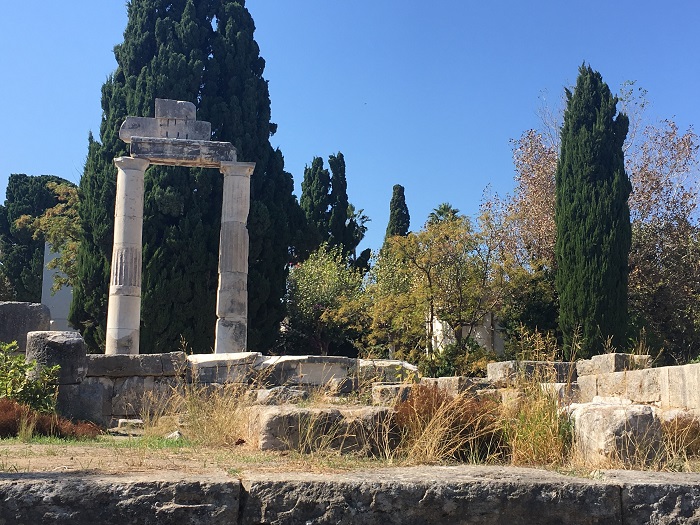
Join Thor and me as we wander the lanes of Kos Town that wind around Hellenic ruins and a reconstructed Roman Villa.
NOTE: Of course, Thor and I had to make another trip to Greece, as he’s fallen as much in love with the islands as I am. This time I wanted to return to Crete after 37 years, to introduce Thor to “glorious Kriti” and research more settings for my novel-in-progress, THE ARIADNE DISCONNECT. After time-traveling via ruins and museums to explore the mysterious, vanished Minoan culture, we went ferry-hopping to relax on a couple of our favorite islands.
We agree with Lawrence Durrell about Kos, “…the island of Hippocrates, which has never failed to excite the visitor to eulogy. Poet and wayfarer alike have always appreciated Kos for its green abundance and quietness. It lies lapped in a fold of the Turkish mainland, which thrusts out great promontories now, one upon another, with spectacular fjords laid up between. Kos, the most sheltered of the Dodecanese islands and deservedly the most praised. It would be downright dishonest to raise a dissenting voice against merits so self-evident in these green and smiling valleys, rich with fruit and flowers.” (from The Greek Islands)
In an earlier post, we arrived via ferry on Kos, admiring the harbor with its medieval castle and fortress guarding the port. Unfortunately, we could not walk on the battlements, due to recent earthquake damage in this land of the earth-shaker god Poseidon.
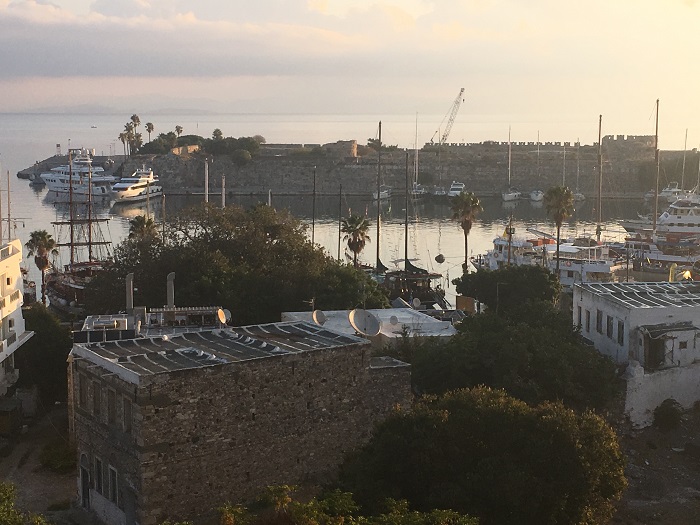
Kos is a lovely town to wander, with its mix of ancient, medieval, and modern buildings. An earthquake in 1933 caused considerable damage but revealed extensive ruins of Hellenic Greek and later Roman temples, gymnasium, theater, and homes. The present-day lanes wind among the ancient sites in various stages of excavation and restoration, and it feels as if you can slip easily through time portals. Thor and I headed from the harbor to visit and revisit a few of the sites. (We had seen some on our visit a year earlier.) As always, we were welcomed by friendly Greek cats.
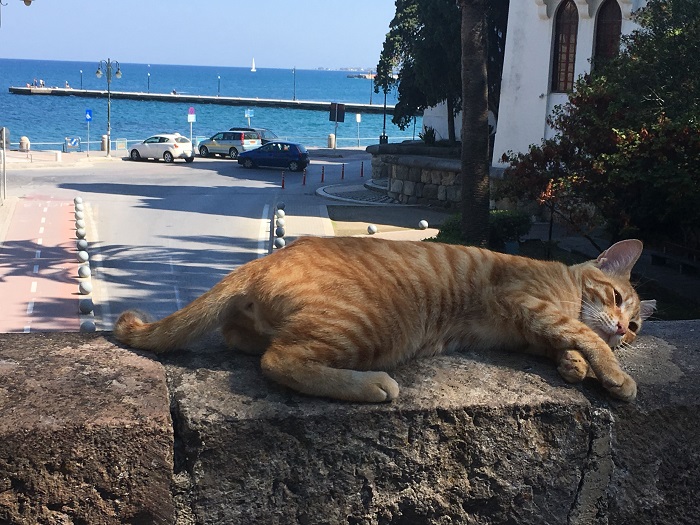

Many of the existing buildings are Venetian-influenced, like this arcade near the Archaeology Museum:
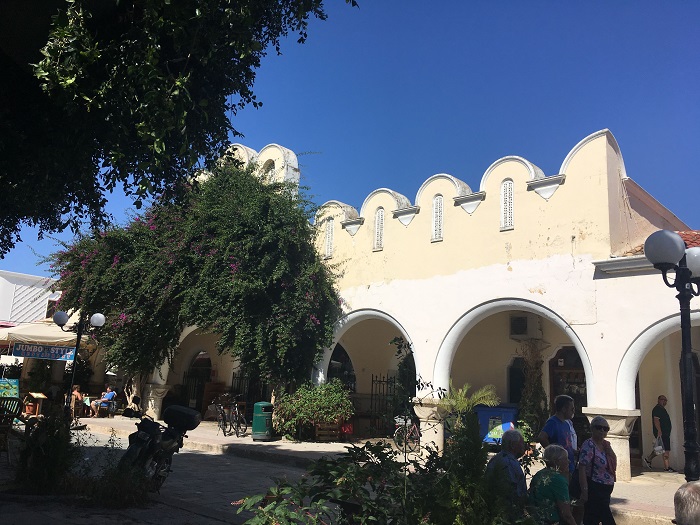
There are beautiful mosques and spires from the Turkish occupation:
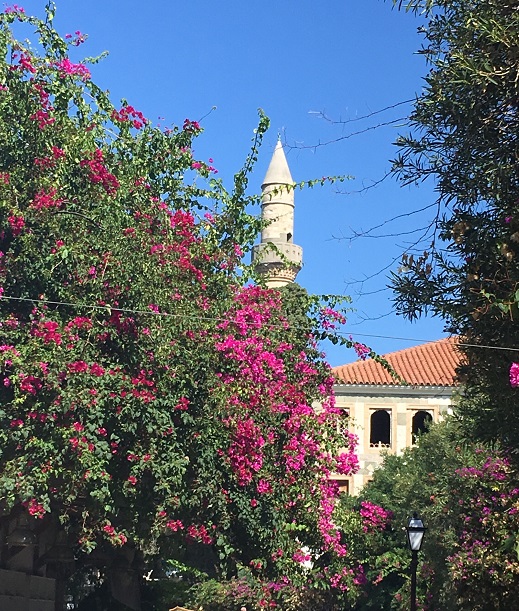
Our path took us past the Hippocrates plane tree, where Thor had gathered leaves the year before to assist with a scientific study. The mosque next to it had been damaged in the recent earthquake.
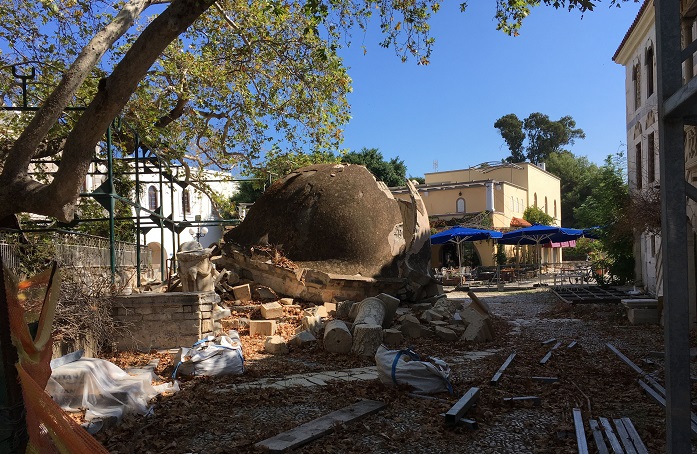
The central Greek Orthodox church also had been damaged in the recent quake. (Fallen pillars and masonry on the other side of the building blocked pedestrian passage.)
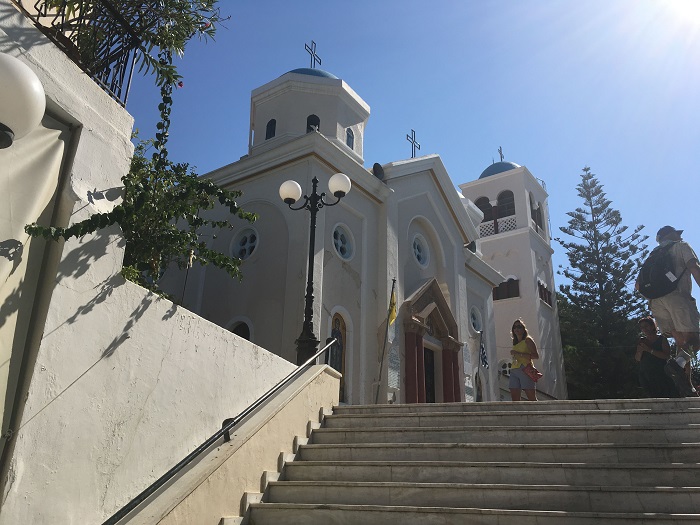
This icon on the side of the church seems to be eyeing one of the earthquake cracks with alarm.
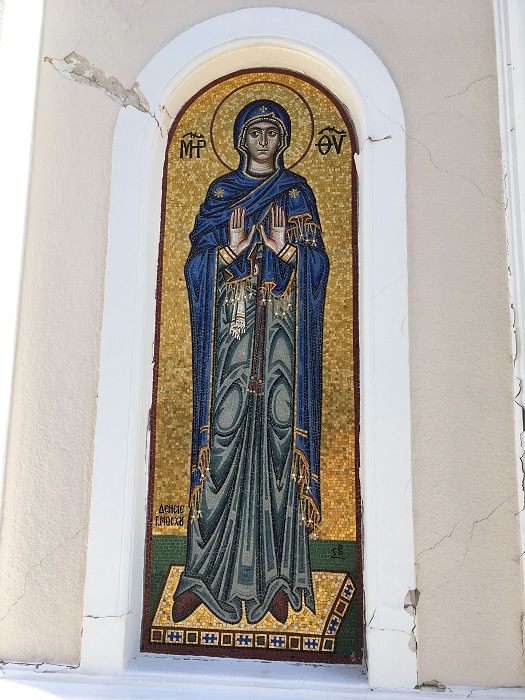
We took a path through the ancient agora — central gathering place — that was uncovered in the 1933 earthquake.
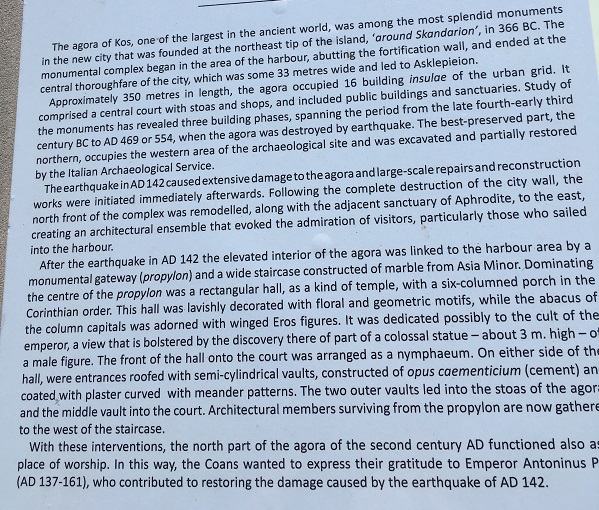
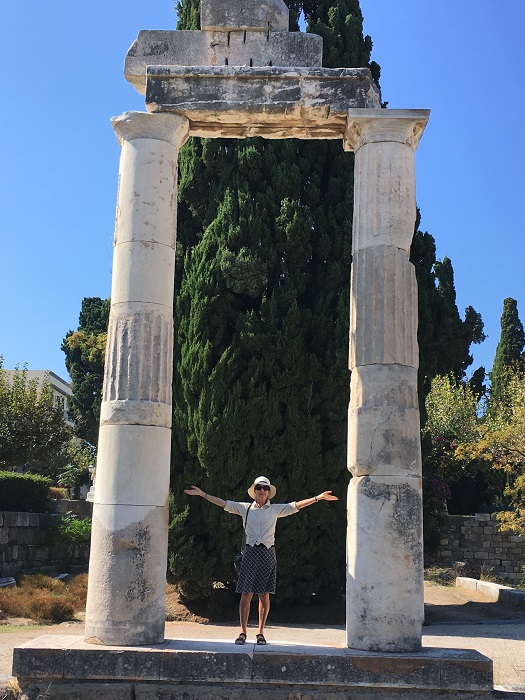
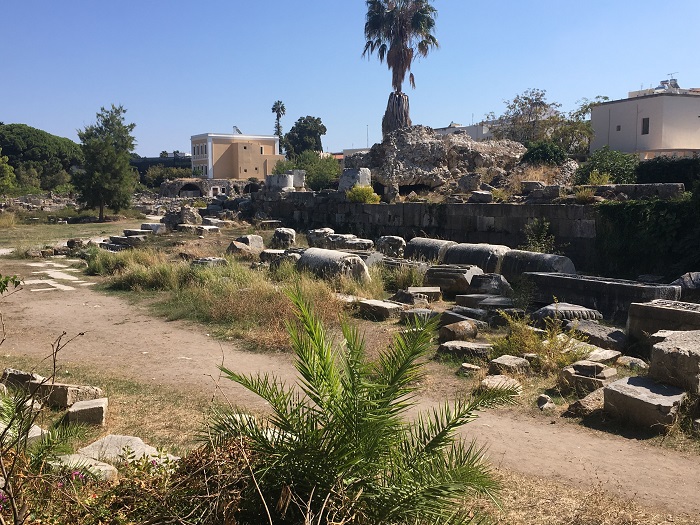
We walked on to the nearby Casa Romana, a restored Roman villa built in the 2nd century AD, in a style similar to homes of the wealthy in Pompeii. It has 26 rooms and 3 open-air atrium courtyards with fountains, mosaics, and statues.
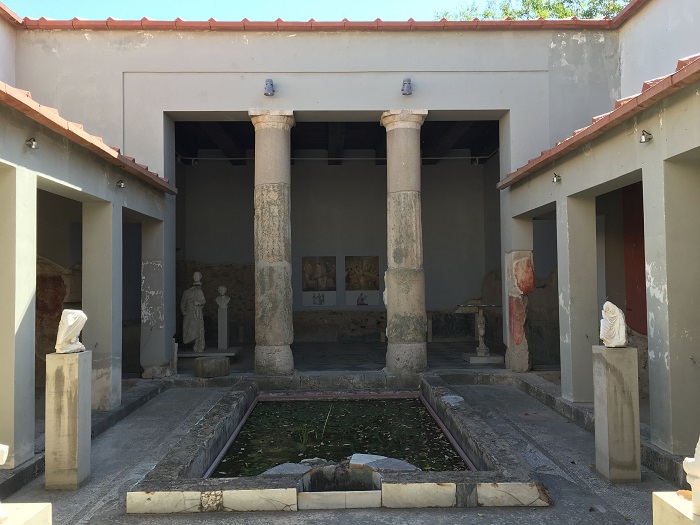
The reconstruction that allowed us to walk inside the villa walls (as contrasted with most of the ancient ruins that are mostly footings) provided an immersive sense of the way these wealthy people lived. They decorated their homes with murals, mosaics, and statues. (Most of the statues from this site, including the statue of the healer-god Asklepios, we saw earlier in my Archaeology Museum blog post). This mosaic featuring sea creatures emphasized the importance of the sea to this port community.
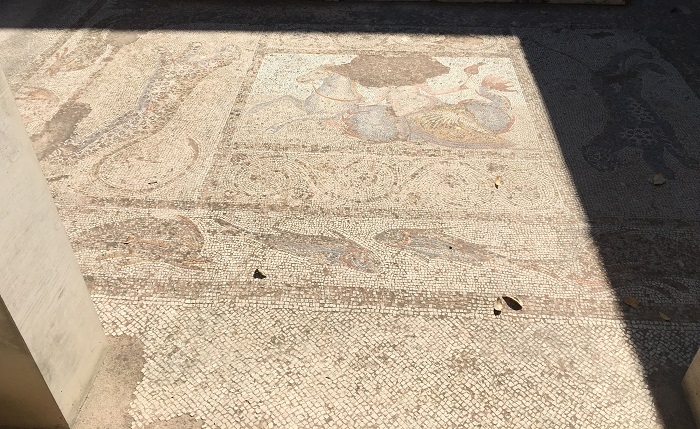
Finds from the site excavation include elaborately modeled ceramic oil lamps like this one from around 100 AD. Behind the lamp is an example of polychrome marble mosaic inlays in geometric shapes:
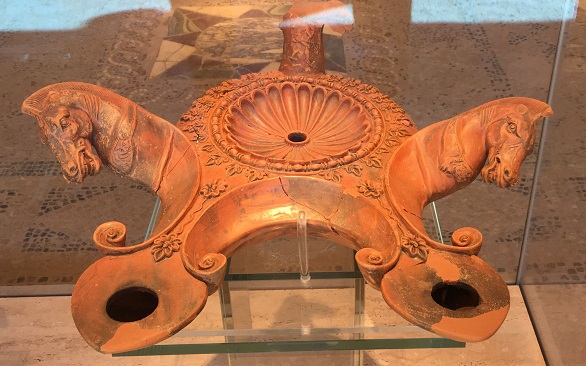
The upstairs gallery looks down on the largest central atrium.
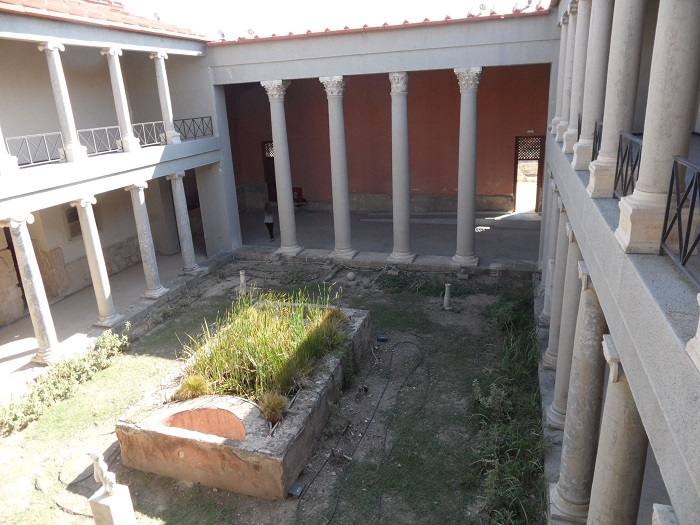
Another mosaic floor reveals motifs of wild animals. The figures apparently reflected the personality of the owner, as well as honoring the popular Dionysian cult of the time.

No Roman villa would be complete without hot, tepid, and cool baths. The footings of this villa’s bathing area were apparently later covered by a marble floor, but this diagram illustrates the setup:
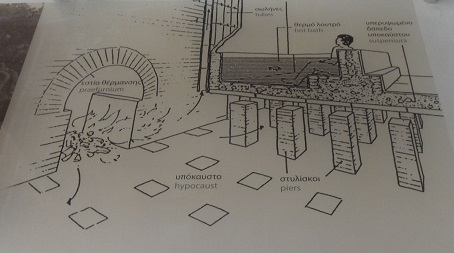
For a colorful, dramatic glimpse of Roman lives in the times of Julius Caesar, I recommend the well-researched HBO series “Rome.” The powerful, sensual matriarch Attia demonstrates the delights of such a bathing room in the first episode. In the Casa Romana, images of Eros (deity of love and sensuality) in murals and clay lamps apparently signaled the entry into private family chambers.
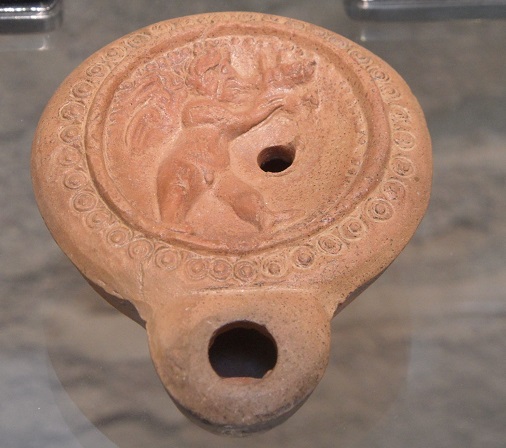
Erotic and phallic images were an accepted part of life, as honoring the gods and fertility. This clay lamp portrays an “ithyphallic figure” atop a tree trunk, with a satyr playing a flute at the base, possibly another nod to the cult of Dionysos. Behind it is a mural with image of Eros playing the lute.
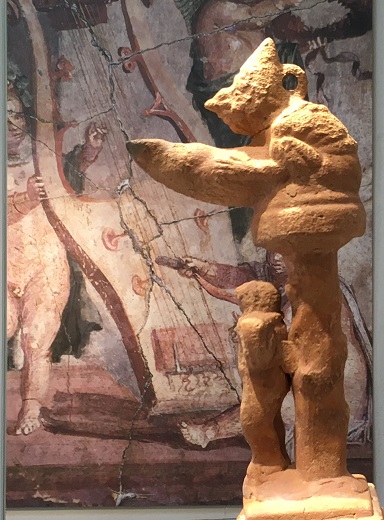
The myths of Dionysos (important in my novel-in-progress) include the story of his capture by pirates, when he turned the tables on his captors by transforming into a lion and scaring the crew into leaping overboard. Once in the sea, they became some of his sacred dolphins. He also caused the ship mast to sprout into a grape vine, ready to produce his gift to humanity of wine. This is the reproduction we acquired of a famous wine kylix from around 500 BC.
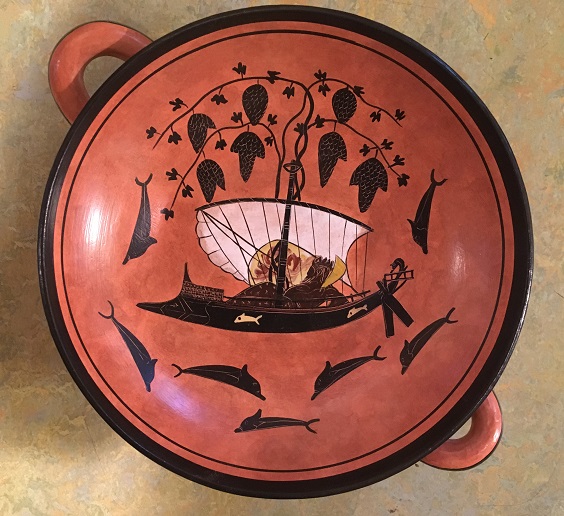
After our Casa Romana visit in the heat of the day, Thor and I headed to — where else? — a nearby beach for a cooling swim. There we experienced our own pirate incursion when this tourist ship invaded our quiet cove.
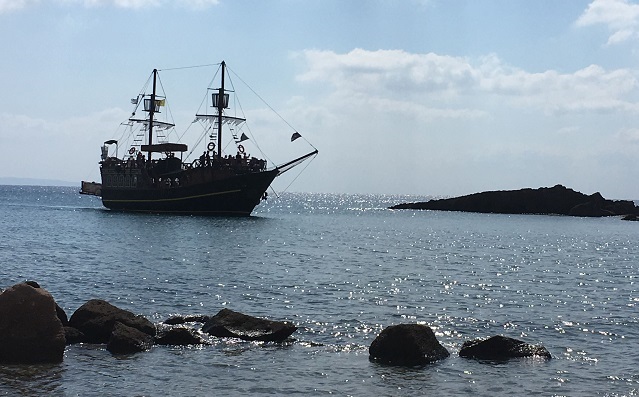
Perhaps by favor of Dionysos or Poseidon, the pirate horde soon departed and left us to enjoy the sparkling clear sea and sculpted rock formations.

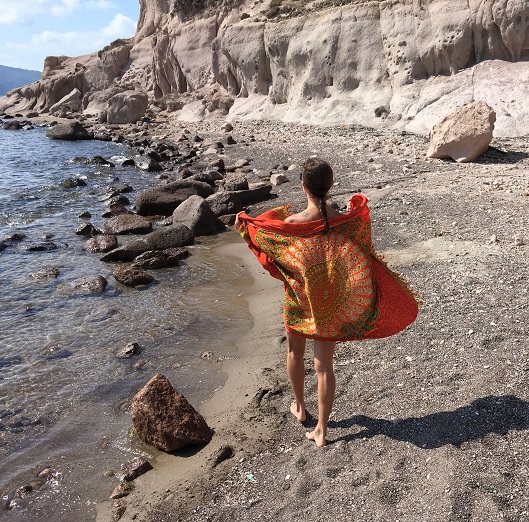
Next week: The ancient Roman theater and ongoing excavations of the Western Site in Kos Town.
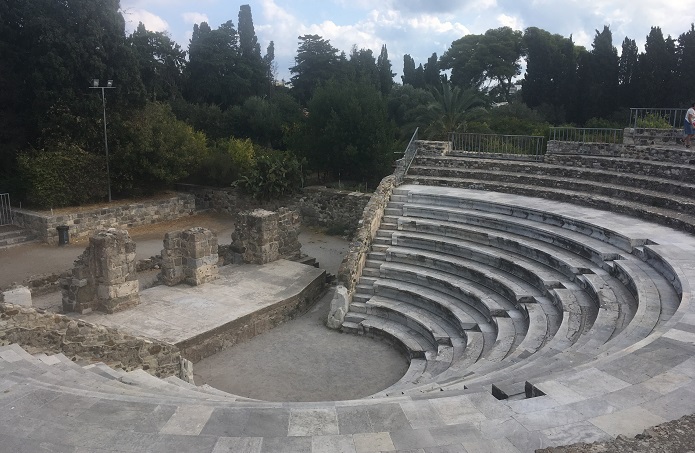
*****
You will find The Rambling Writer’s blog posts here every Saturday. Sara’s latest novel from Book View Cafe is available in print and ebook: The Ariadne Connection. It’s a near-future thriller set in the Greek islands. “Technology triggers a deadly new plague. Can a healer find the cure?” The novel has received the Chanticleer Global Thriller Grand Prize and the Cygnus Award for Speculative Fiction. Sara has recently returned from another research trip in Greece and is back at work on the sequel, The Ariadne Disconnect. Sign up for her quarterly email newsletter at www.sarastamey.com

1 thought on “The Rambling Writer’s Greek Islands, 2019, part 6: Kos Town’s Ancient Sites”